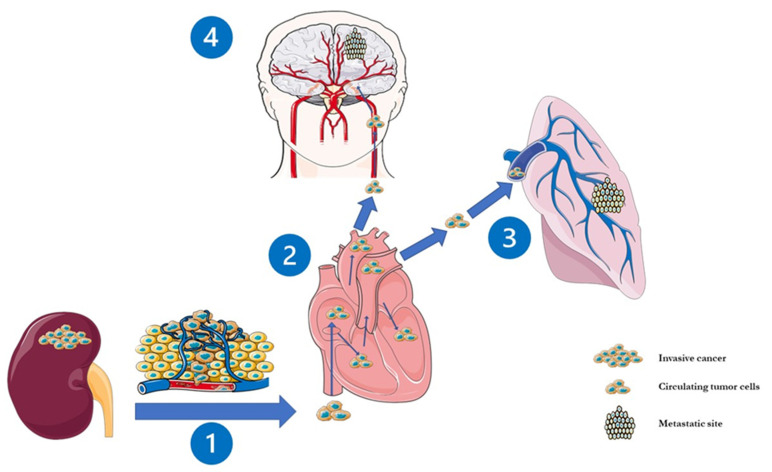Figure 1.
The cava-pathway and subsequent steps in the development of brain metastasis in renal cell carcinoma. The metastatic spread seems to begin with RCC-derived microvesicles CD105+ which break off from the primary tumour site and disseminate through the cava-type hematogenous pathway in 75% of the cases (1). Then, these microvesicles, carrying a cancer stem cell phenotype which stimulate angiogenesis, are transported through the right heart (2) into the pulmonary capillaries and (3) arterial circulation and finally attain the cerebral vasculature (4).

